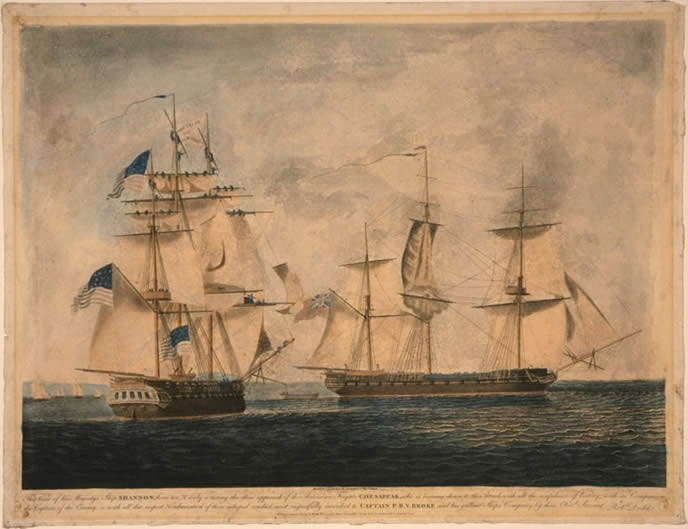
Library of Congress Lessons Learned: Fort Monroe and the War of 1812
When hostilities broke out between Americans and British in 1812, the strategic importance of Point Comfort, at the mouths of the James and Elizabeth rivers had been known for almost two hundred years. Yet the deep natural harbor at Hampton Roads remained largely undefended and the United States paid dearly for leaving the Chesapeake Bay and its Atlantic coastline vulnerable during the War of 1812. Searing memories of enemy invasions steeled America's resolve for stronger coastal defenses after the war ended in 1815. Fort Monroe is the first and largest of an extensive system of massive coastal fortifications constructed, according to President James Madison, as the "best security for continuance of the peace."
Congress appropriated funds to construct a lighthouse at Point Comfort in 1801 and the 54-foot beacon had been operating for nearly a decade when, on June 1, 1812, President Madison sent his "war message" to Congress outlining American grievances against Great Britain. The British response to several spectacular American victories on the high seas early in the war was to blockade the Delaware and Chesapeake bays in February 1813 and seize the Point Comfort light soon after that.
A Royal Navy flotilla, commanded by Rear Admiral Sir George Cockburn, sailed through the Virginia Capes into the Chesapeake that spring, burning and looting the countryside. Americans reviled Cockburn for destroying Havre de Grace, Maryland, more than 200 miles north of Hampton. First Lady Dolley Madison summarized the fears of residents from up and down the Chesapeake about invasion and decried the "savage stile [style] of warfare."
The British went on to attack Washington, D.C. in August, 1814, burning the White House and the Capitol and underscoring the vulnerabilities of the American coastline. After the war President James Monroe and Congress created a plan to protect coastal cities, including the nation's capital, with a comprehensive "Third System" of coastal fortifications. Construction of Fort Monroe, the first and largest of these Third System forts, began at Old Point Comfort in 1819. |
Last updated: February 26, 2015
